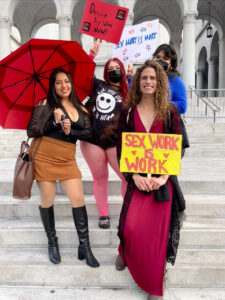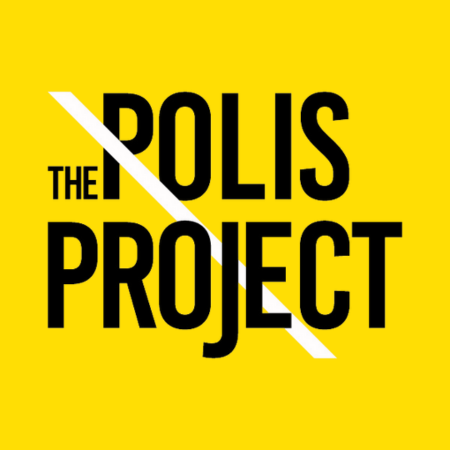
Adolescence, Innocence, and Accountability: Netflix’s Hit Series Indicts Us All

Adolescence is an unruly, dense, and ultimately gut-wrenching exploration of modern masculinity. It doesn’t offer the comforts of conventional Netflix material: no quick cuts, exciting plot twists, satisfying “gotcha” moments, or digestible resolutions. This makes for frustrating viewing, as it forces us—especially us male viewers—to look within, showing us scattered glimpses of ourselves, our memories, trauma, and complicity in upholding some version of toxic masculinity.
Watching the four-part limited series took me back to my own childhood and adolescence. It reminded me of the many ways in which the syntax of patriarchy has been etched into me—the swimming coach who took pleasure drowning me, the senior who liked to beat me around for sport, and my father—himself the product of a ruthless boarding school—who wanted so badly to protect me from such external violence that he took it upon himself to toughen me up before anyone else would.
These are quotidian, practically universal experiences of growing up a boy that fundamentally shaped my worldview and behavior: difficulty empathizing with people I perceive as “weaker” than me, my inability to understand—let alone articulate—my own emotions, my tendency to withdraw, disengage, and avoid conflict rather than rejigger my mode of conflict-management. “The first act of violence that patriarchy demands of males is not violence toward women,” bell hooks writes in The Will To Change: Men, Masculinity, and Love (2004). “Instead, patriarchy demands of all males that they engage in acts of psychic self-mutilation, that they kill off the emotional parts of themselves.”
Adolescence advances hooks’ thesis while exposing the dangers of ignoring it.
The series is bookended by moments between fathers and sons. It opens with Detective Inspector Luke Bascombe (Ashley Walters) playing a message from his son, Adam (Amari Bacchus), claiming to be under the weather to avoid going to school. It’s an innocent, white lie, which Bascombe laughs off.
But it underscores how easily and naturally his son lies to him to get his way, and how much Bascombe normalizes it. It also highlights the emotional distance between them, as Bascombe doesn’t even begin to question why his son doesn’t want to go to school or why he doesn’t feel comfortable sharing the reasons for it, repeatedly lying instead.
These aspects lurk beneath this moment of levity, right before DI Bascombe leads a team of assault gun-wielding police dressed in black to arrest 13-year-old Jamie Miller (Owen Cooper) at dawn. A working-class white British family, Jamie’s parents, Eddie (Stephen Graham) and Manda (Christine Tremarco), and elder sister, Lisa (Christine Tremarco), follow the police van to the station, baffled by the state’s violent intrusion into their home, their lives suddenly upended. They cannot believe what their feeble little boy has been accused of: murdering his classmate, Katie Leonard, the night before.

Each episode of Adolescence is shot in one long, continuous take. This technical marvel effectively serves the series’ unflinching, unrelenting critique of British society—and at a larger level, all of us. The screenplay complements this choice: while each episode unfolds in real-time, strategic time jumps between episodes allow the show to examine key moments with immersive detail, from the day of Jaime’s arrest (episode one), to the police investigating his school three days later (episode two), to a quasi-interrogation with a psychologist seven months later (episode three) to a morning in his family’s life, 13 months after his arrest (episode four).
This way, the series offers a grim yet visceral portrait of patriarchy and carcerality, spanning the uncompromising legal system, the broken education system, a toxic internet culture, and the often chronically detached and emotionally disconnected nature of father-son relationships.
A Social Drama Dressed Like a Whodunnit
Episode one of Adolescence vaguely resembles a whodunnit. But it’s less interested in the thrill of the mystery than it is invested in making us feel the weight of the situation: the anxiety of Jamie’s family at the police station, the laborious legal procedures, the shock Jamie is in throughout this process.
The police break down his door, barge into his house, and arrest the 13-year-old Jamie like a seasoned criminal. He wets himself from shock. In another grueling scene, the camera remains focused on his father, Eddie, as Jamie is stripped down and searched, his private parts examined for potential “evidence”.
In these most discomfiting moments, the single shot refuses to give us the release of a cut, even a moment to breathe and look away from the raw human suffering on display. Adolescence remains painfully focused on the weight of Jamie’s crime, forcing the characters—and all of us—to sit with it, and square it with the image of a young, white—and therefore automatically presumed-innocent-looking—little boy.

In a heartbreaking moment at the end, the officers finally reveal their evidence against Jamie. It’s irrefutable—down to CCTV footage of him following and then beating up Katie, before presumably stabbing her. The camera focuses on Eddie, whom Jamie chooses as his “appropriate adult” for the proceedings, breaking down as he first faces what his son has done.
Eddie can’t help but look away from the footage as he cries in disbelief. But he remains confronted by the harrowing, unbearable fact that his sweet little Jamie could be capable of such brutal violence. In the final moments of the episode, we see Eddie hugging Jamie for the first time. Until then, Eddie barely even touches his son, reflecting the profound lack of vulnerability and physical intimacy in their relationship.
Carceral systems exceptionalize people who commit crimes like rape and murder, meting out the highest punishment—including, in many countries, the death penalty—in the name of “justice.” In practice, however, this only satisfies a more primal need for revenge, often taken out on an “otherized” villain: immigrants, minorities, the poor, those more “predisposed to such violence”, or in whose “nature” or “culture” such violence is “normal.”
It is no surprise, then, that many white nationalists have criticized Adolescence for being “anti-white” and supposedly misrepresenting the reality of knife crime in the UK. For them, only Black and other racialized young “men”—never afforded the privilege of being considered children—can commit such crimes.
Using a small, white 13-year-old boy as the vessel, the series forces us to grapple with the harsh truth that acts of violence against women and girls are not exceptional aberrations, but inevitable outcomes of patriarchal and other systems in which we are all complicit.
A Broken Schooling System
Episode two of Adolescence takes place three days after the initial arrest, and continues the police procedural as the cops search for a motive and murder weapon. In the process, we become privy to a part of the environment that breeds such violent behavior: the school. The episode is a deep dive into the UK’s floundering education system: tired, frustrated, underpaid teachers struggle to discipline disinterested, rowdy students; kids are filled with rage but have no outlet, while bullying remains unchecked.
Bascombe’s son, Adam, is bullied—perhaps the real reason he doesn’t want to go to school. Likewise, Katie’s best friend, Jade, has a difficult relationship with her own mother. She is frustrated and has no faith in the school or police, as they failed her friend. She refuses to answer the police’s questions, her insolence rooted in righteous anger that later erupts into violence as she assaults Ryan, Jamie’s friend, whom she blames for Katie’s murder.

As the cops struggle to find a motive, the series’ attention shifts to the “manosphere”, a large, heterogeneous online community of “men’s rights activists” and right-wing influencers who peddle misogyny and anti-feminism. The manosphere preys on young men’s feelings of loneliness, insecurity, and low self-esteem to blame women’s rights for all men’s problems, advocating for traditional gender roles, especially a more aggressive masculinity. But the ubiquity of these ideas is not so easily apparent to the police.
When Bascombe and his partner, DS Misha Frank (Faye Marsay), first hear about the spread of misogynistic ideas among students, she loosely references “that Andrew Tate shite”, naming the most popular self-proclaimed misogynist influencer with over 10 million followers on X and videos of whom on TikTok have been watched 11.6 billion times. But only when Bascombe’s son, Adam, takes his father into confidence does a clearer picture unfold. Adam contextualizes Jamie and Katie’s interactions on social media, where Katie used several emojis with hidden meanings to imply that Jamie is an “incel”.

Adam explains the popular but baseless concept of the “80/20 rule” that “80% of women are attracted to 20% of men.” The remaining unattractive, unworthy men must “trick” women as they can never “get them in a normal way.” A bewildered Bascombe struggles to wrap his head around the lingo and his son’s world, which feels so alien to him. Was Katie essentially bullying Jamie? Why? Could that ever “explain” Jamie’s actions?
To interpret Adolescence as victim-blaming Katie would be a mistake. Instead, the series criticizes how adolescence today is completely devoid of innocence, corrupted by the malignancy of the internet and beyond. Adolescence represents the school as an unsafe, toxic atmosphere that fosters resentment and reinforces the students’ disillusionment. It leaves us to imagine how, under just the right circumstances—loneliness, neglect, low self-esteem, and most importantly, manipulative social media algorithms—difficult emotions can curdle into criminality.
Jamie was not alone, as we realize by the end of the episode. Ryan provided him with the knife. Bascombe learns not just about the manosphere, but something even deeper: he needs to reach out to Adam more and make more of an effort to connect and spend time with him. “What children need most from their fathers,” as bell hooks writes, “is love, care, and emotional presence.”
Like that, Adolescence gives us a glimmer of hope as the Bascombe boys go out for a meal together and share a moment of intimacy. At the same time, the camera seamlessly takes off into a stunning drone shot, capturing swathes of school children exiting the premises, glued to their phones; then gliding towards the scene of the crime, where Eddie brings flowers to Katie’s memorial. One father can yet salvage his relationship, while another tries to atone for the failure of his.

An “Interrogation” For The Ages
Episode three, perhaps the most widely praised, jumps seven months to when Jamie has been in custody at a Secure Training Centre, being questioned by a forensic psychologist, Briony Ariston (Erin Doherty), for a pre-trial evaluation. This episode turns the format of the “interrogation” on its head to give us nearly one hour of meandering conversation between Jamie and Briony, who is trying to gauge his worldview.
While she reassures him that she’s only here to assess his “understanding of the case,” Jamie treats it like a power play, a game of chess, revealing the tussle between his child-like being and his clumsy performance of what he considers adult masculinity. After all, “to be a man,” hooks writes, “is to never show vulnerability, to always be in control.”
One moment he kindly thanks her for the hot chocolate and drinks it like a little boy, the next he throws it away in a fit of rage; one moment he is talking about feeling ugly or useless or pathetic when his father looked away during football games, unable to see his son flounder, the next moment he threatens Briony and tells her how pathetic it is that she’s scared of a 13-year-old.
Jamie cringes and cowers when asked about intimacy or sexual desire, yet his Instagram is inundated with images of women’s bodies, he lies without hesitating about his sexual experience, and he freely alludes to Briony, a woman over twice his age, being flat-chested. He wants to be vulnerable with Briony, but doesn’t know how to be; he’s desperate for her to like him, but doesn’t know how to reciprocate her respect and empathy. Throughout the episode, his mood flits between distant and warm, paranoid and trusting, amiable and agitated.
This exchange offers us a peek into Jamie’s warped, misogynistic, and resentful outlook. Amid this traumatic dance of dialectics comes an accidental confession of what he did, where all his assumptions—the product of a well-documented subculture of incels and men’s rights activists—are laid bare. A male classmate shared Katie’s topless photo with the boys, so the students were slut-shaming her. This, Jamie reasons, made her “weak” and thus more “gettable” for him, so he asked her out, only for her to reject him and make fun of him being an “involuntary celibate” on Instagram.

A toxic cocktail of low self-esteem, fear of rejection, learned entitlement, and a scorned ego led Jamie to threaten her with a knife, a thwarted response to him feeling unsafe. Until the end, though, he contends he is a good person for not sexually assaulting her when he had the chance.
So chronic is his need to be seen, loved, and validated that even after lashing out at Briony, he desperately asks her if she likes him. Beyond Jamie’s half-baked confession, this interaction portrays how terrified he is of being disliked, rejected, and abandoned, especially by women. It exposes his inability to process that fear and feeling of vulnerability, for which he surely would have been told to “be brave” and “toughen up”, including by his father, who we see repeatedly giving his shell-shocked son this very same message at the police station in the first episode.
In hooks’ words, “The wounded child inside many males is a boy who, when he first spoke his truths, was silenced by the patriarchal world.” Without a blueprint for vulnerability and emotional expression, the only script he’s been given is the “Andrew Tate shite”, the 80-20 rule, the need to dominate, manipulate, control, and if all else fails, brutalize.
After the guard escorts Jamie away, the camera lingers on a disturbed Briony, whose state mirrors that of us, the viewers, who have spent the past hour alongside her in real-time, excavating the crevices of Jamie’s mind. She has also endured all manner of aggression, harassment, and insults to do her job. But she—and we—are left harrowed by something more sinister: patriarchy’s violent, dehumanizing logic internalized by a young, 13-year-old.

Between Grief, Blame, and Responsibility
Episode four, which delves into the state of Jamie’s family, 13 months later, is the most poignant. It is Eddie’s 50th birthday, and the family plans to celebrate with a full English breakfast, a trip to the cinema, and some Chinese food. But their attempts at healing get eclipsed as some neighborhood boys spray paint “Nonce” (British slang for a sex offender) on Eddie’s car, which he tries his best to scrub using soap, but fails.
Here, the single shot forces us to feel his family’s pain—the sheer enormity of it, their loss, and shame, as they grapple with their culpability, asking themselves questions very few parents ever dare to dream of.
Jamie’s parents go back and forth on how they raised him, analyzing what they could have done differently and what they did wrong. Were they good parents? How did his sister turn out so mature, empathetic, and thoughtful? At one point, they note how Jamie was always in his room, surfing the internet. “But he was in his room, wasn’t he?” his mother asks. “We thought he was safe, didn’t we? What harm can he do in there?”
They discuss the football matches that Jamie told Briony about, although they don’t know how formative it was for their son. Eddie confesses to feeling ashamed of his son when he floundered on the football field. “When I was his age, my dad used to fucking batter me, and I promised myself I’d never do that to me kids,” Eddie reflects. “I just wanted to be better… but am I?”
Ultimately, they acknowledge their responsibility without absorbing blame for their son’s actions. “Should we have done more, though?” Eddie asks Liane. “I think it’d be good if we accepted that we should have done,” she replies lovingly.

There’s no antagonist in Adolescence—but the presence of the patriarchy is everywhere: the school teacher in episode two who introduces the male detective Bascombe to the students but forgets the female Frank; the security guard in episode three who gets too close to Briony and impedes her ability to do her job; or Jamie’s mum and sister, who must bear not only the weight of Jamie’s actions and the trauma of losing him, but also tiptoe around Eddie’s erratic temper and outbursts.
Adolescence remains consistently clear-eyed about the pervasiveness of misogyny while centering all kinds of masculinity with an empathetic, curious, and compassionate gaze. Perhaps the most standard narrative arc comes from a phone call from Jamie to wish his father happy birthday and share an update: after repeatedly insisting that he’s “done nothing wrong”, he has decided to plead guilty.
This is the closest he comes to admitting what he did. Adolescence doesn’t take a position on whether justice is served, nor does it tell us how to feel about Jamie’s arrest, catharsis, and what accountability should look like for a 13-year-old who has committed a heinous crime. In the UK, there are around 440 children in juvenile detention at a given time, with a reoffending rate of 32.2%, predominantly due to systemic safety concerns, lack of education and mental health support, and difficulties finding employment and housing upon release.
Adolescence forces us to bear witness to all this trauma, and to see Jamie and this murder as tragic but inevitable products of our existing, deeply flawed structures and systems. After all, one in six Gen-Z boys and men aged 16 to 29 in the UK believe that feminism has done more harm than good; 25% believe it’s harder to be a man than a woman; and one in five of those who have heard of Andrew Tate say they have a positive view of him, according to research, demonstrating a “real risk of fractious division among this coming generation.”
The final father-son interaction in Adolescence features Eddie as he enters Jamie’s room after avoiding it all year, and talks to his son using his left-behind teddy bear as a proxy. “I’m sorry,” he says, breaking down in a tender moment of vulnerability. “I failed you,” Eddie continues, kissing the bear, as he likely never kissed his own Jamie when he had the chance. “I should have done better.”
I was completely devastated by the realization that it was too late for him. Like Katie, Jamie may never come back. The Millers may forever be left searching for closure. As for the rest of us, how many more Katies—and Jamies—will we have to lose before we finally look in the mirror?





